Submarine War Badge, by B. H. Mayer (in tombac)
CATEGORY: Version
SKU: 01.GTR.0901.102.01.000
Estimated market value:
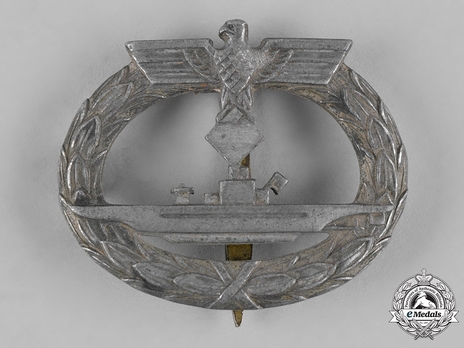
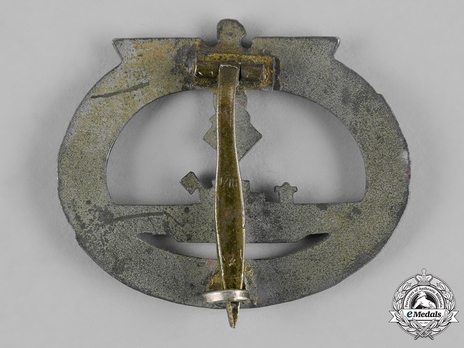
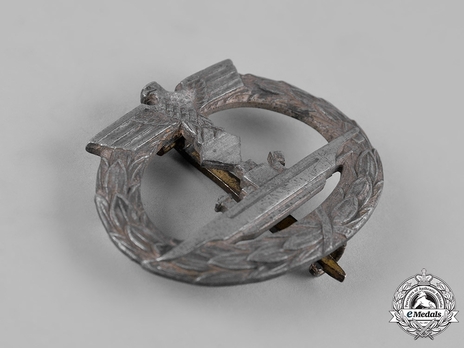
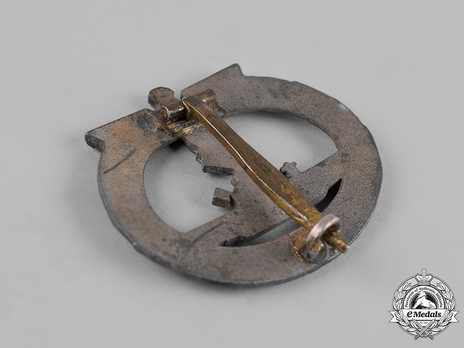
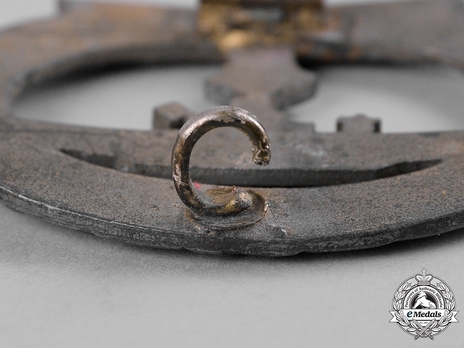
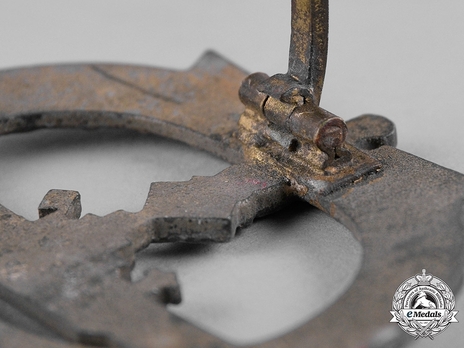
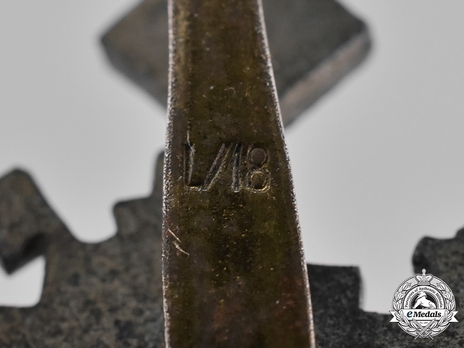
Estimated market value:
A badge constructed of gilded tombac in the shape of a horizontally oriented oval laurel wreath, with a national eagle placed on-top of the badge clutching a mobile swastika (swastika filed off), and with a submarine superimposed in the center of the badge, the reverse plain, with a vertical coke bottle-shaped pin, a barrel hinge, and a round wire catch, pin marked L/18 for B.H. Mayer, Pforzheim, measuring 48.36 mm (w) x 39.96 mm (h), weighing 17.3 grams, presenting heavy loss of gilt, and in good condition.
The Submarine War Badge was originally instituted in January of 1918 and it was later revived by Adolf Hitler on October 13th, 1939. The Badge was conferred upon U-Boat crews who were exceptional at locating and destroying enemy vessels.
To receive the badge, an individual had to participate in at least two operational missions or had to participate in at least one successful sortie against the enemy. In addition, if an individual was wounded during a mission, they were also eligible to receive the badge. If a sailor was killed in the line of duty, his badge would be sent to his next-of-kin. The award could be conferred upon officers, non-commissioned officers, and enlisted men, as long as they fulfilled one of the criteria listed above. The awards were issued at the discretion of the U-boat's captain.
The first badges were manufactured by Schwerin & Sohn (Berlin) and were composed of tombac. The finishes vary and include real gold and artificial gold washes. Cloth badges were produced but rarely worn.
Badges by Mayer are marked with the company’s LDO number, L/18. It is possible that the company also produced a number of unmarked badges. Badges are made of tombac or zinc.

Comments
Sign in to comment and reply.


Scroll Top